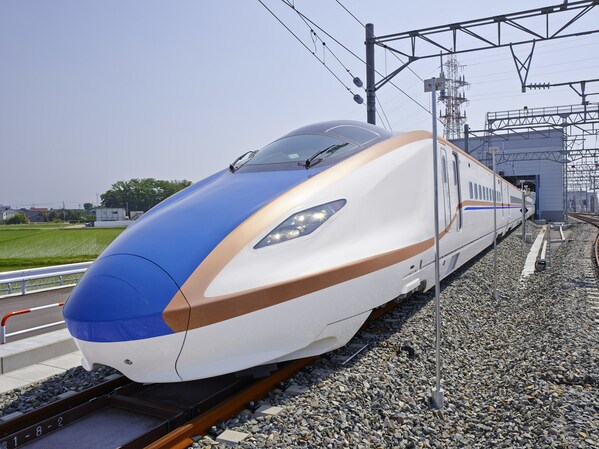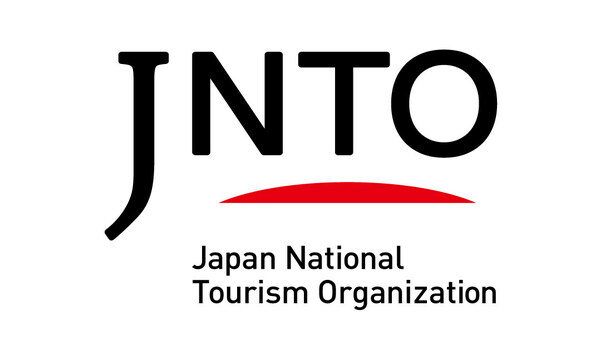TOKYO, March 14, 2024 /PRNewswire/ -- The Hokuriku region is located on the northwestern part of Japan's main island of Honshu and is known for its all-seasons appeal - spectacular cherry blossoms destinations, pleasant summers, vibrant autumn colors and snowy winters. The Hokuriku Shinkansen's current terminus is historical Kanazawa City, known for its well-preserved Edo-era districts, traditional tea houses, and beautifully landscaped gardens like Kenrokuen but this new extension will offer improved access to Fukui Prefecture starting March 16th this year, saving time and creating new opportunities to easily visit charming places like Fukui City, which is only 2 hours and 51 minutes from Tokyo by the fastest possible time.
Fukui Prefecture, where Tsuruga and Fukui City are located, is getting ready to welcome more visitors once the Hokuriku Shinkansen commences operation of 14 round trips from Tokyo per day. The capital of Fukui Prefecture is Fukui City, a small castle town most known for the Fukui Prefectural Dinosaur Museum which is recognized as one of the greatest dinosaur museums in the world, with more than 900,000 visitors yearly. Travelers also love visiting the city during cherry blossom season as the Asuwa River and the Weeping Cherry Tree at the Asuwa Shrine transform into a pink paradise each spring. Not far from Fukui City is Maruoka Castle, one of twelve castles in Japan with a surviving historical keep from the feudal era that also hosts an annual cherry blossom festival.
Aside from its historical riches, Fukui is home to the Tojinbo Cliffs, a Natural Monument and Place of Scenic Beauty. Further, deep in the Fukui mountains lies a temple founded by Zen Master Dogen in 1244, Eiheiji Temple, where about a hundred monks practice devotion daily.
Other stops on the Hokuriku Shinkansen line include Awara Onsen, an ideal day trip destination for hot spring fans looking to bathe in central Japan's geothermal waters. Meanwhile in Tsuruga, travelers will get to enjoy fresh seafood, owing to the city's location by the sea. Kehi Shrine is the main shrine of the region, originally built in the year 702 and has one of the three great wooden torii gates in Japan.
From Tokyo, major stops along the line in the Hokuriku Shinetsu area include destinations within the mountainous Nagano Prefecture, known for its rich history, natural beauty, and outdoor adventures.
Meanwhile Toyama Prefecture is a jumping-off point for visiting World Heritage Gokayama villages and the Tateyama Kurobe Alpine Route.
The expansion of this shinkansen line is another step to increasing connectivity to the outskirts, which creates a wonderful opportunity for travelers to discover the towns of the Hokuriku area rather than large metropolitan areas.
Connecting your Hokuriku Shinkansen journey to other areas via special rail passes
Visitors to the Hokuriku area will certainly benefit from using special JR rail passes to explore a variety of areas along the new shinkansen route.
Those wanting to expand their itinerary to include destinations within the Kansai region may be interested in the Hokuriku Arch Pass, which is valid for seven days and offers unlimited rides from both Tokyo and Osaka to the Hokuriku region. Alternatively, the Kansai-Hokuriku Area Pass allows for seven days of unlimited rides from Kansai to Toyama, Ishikawa and Fukui prefectures.
Media contact:
For media inquiries, including requests to use photographs, please contact the JNTO Press Office at media_inquiry@jnto.go.jp
About Japan National Tourism Organization
The Japan National Tourism Organization (JNTO) is an independent administrative corporation under the jurisdiction of the Japan Tourism Agency. JNTO operates tourism promotion offices in overseas countries, promoting tourism to Japan and providing tourist information to overseas visitors.
source: Japan National Tourism Organization
《說說心理話》:講講常見年輕人理財問題!想「人有我有」?認可理財社工分享理財觀念小秘訣!► 即睇

































